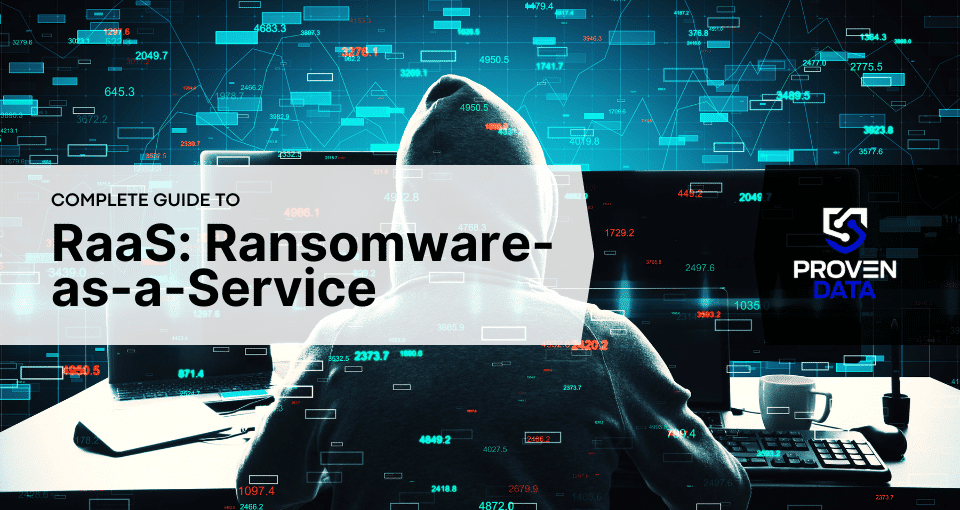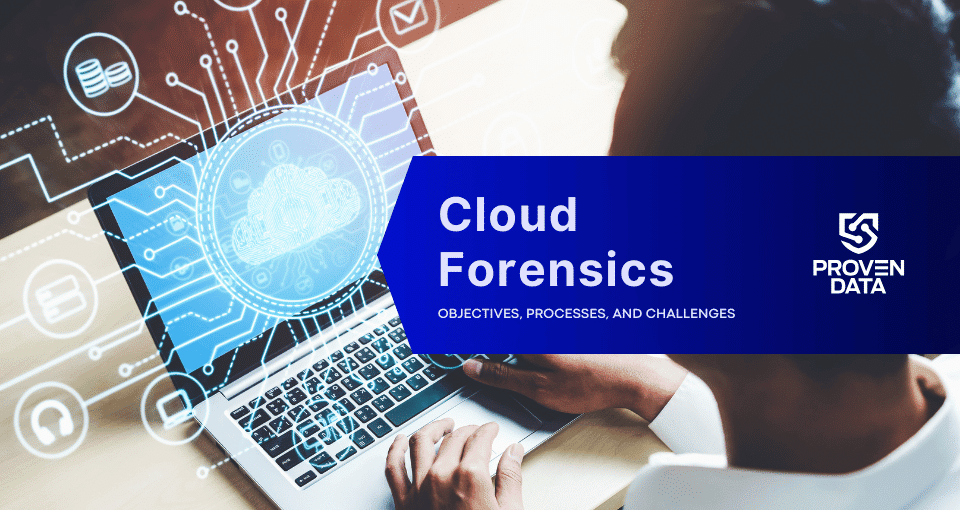Ransomware as a Service (RaaS) represents a malicious model wherein cybercriminals offer a user-friendly platform, enabling those with limited technical expertise to engage in ransomware attacks. In straightforward terms, it adopts a ‘crime-as-a-service’ approach, allowing users to rent ransomware tools and execute attacks in exchange for a portion of the ransom payments.
Recognizing and addressing Ransomware as a Service (RaaS) is crucial given its widespread accessibility. Operating as an organized criminal business model, it results in significant economic consequences and data breaches, emphasizing the urgency for proactive measures to fortify defenses against such attacks.
Collaborative efforts among cybersecurity professionals and law enforcement are imperative to dismantle RaaS operations, as its global nature necessitates international cooperation to effectively mitigate risks across borders.
Definition of Ransomware-As-A-Service (RaaS)
Ransomware as a Service (RaaS) is a malicious business model where cybercriminals offer ready-made ransomware to individuals or groups. Thanks to it, random individuals can execute cyber attacks without advanced technical skills. This distribution model makes RaaS more accessible and widespread, posing an increased threat to individuals and organizations.
Ransomware as a Service (RaaS) differs from other types of ransomware in that it operates as a business model. Traditional ransomware, on the other hand, is typically created and deployed by a single group or individual.
The threat of RaaS has been rapidly increasing in the cybersecurity landscape. This model democratizes cybercrime, enabling a broader range of attackers to deploy ransomware, leading to a surge in the frequency and scale of attacks. The user-friendly nature of RaaS platforms exacerbates the challenge for cybersecurity professionals to combat these threats effectively.
RaaS providers act as the architects behind the scenes, developing and maintaining the ransomware infrastructure. Their primary motivation is financial gain.
RaaS providers attract affiliates, who may lack technical skills but are willing to execute the attacks. This collaboration streamlines the ransomware ecosystem, allowing for efficient and widespread extortion, while offering financial incentives to both providers and affiliates.
How does RaaS work?
Ransomware-as-a-Service (RaaS) operates on the software-as-a-service (SaaS) model, providing online access to ransomware through a subscription-based platform. Evolving independently in an underground ecosystem, RaaS thrives with key players, organized into groups with designated roles such as leaders, developers, and infrastructure administrators.
RaaS operates with the collaboration of two key parties: Developers and Affiliates. Developers create specific code within the ransomware, selling it to affiliates along with instructions on launching attacks.
Affiliates choose the malware type, pay with cryptocurrency (typically Bitcoin), and, upon a successful attack and ransom receipt, share profits with developers based on the revenue model. RaaS operators provide a platform or control panel to interested affiliates, offering ready-built malware, affiliate tracking links, and marketplaces for buying/selling malicious programs.
The rise of RaaS platforms has enabled cybercriminals to conduct highly profitable campaigns with minimal technical experience. As a consequence, cyberattacks are on the rise, underscoring the importance for organizations to invest in effective security measures to safeguard their data from potential ransomware threats.
Exploring Ransomware as a Service (RaaS) revenue models
The RaaS landscape features diverse revenue models, each tailored to the preferences of cybercriminals aiming to profit from illicit activities.
Here are four prevalent RaaS revenue models:
1. Monthly Subscription
In alignment with a Software as a Service (SaaS) approach, RaaS is accessible through a monthly subscription. Users commit to a fixed monthly fee, securing not only the use of ransomware tools but also a percentage of the proceeds from each successful ransom.
This model provides a consistent income stream for both affiliates and RaaS developers.
2. Affiliate Programs
Aimed at optimizing service efficiency and bolstering profits, the affiliate program structure allocates a fraction of the earnings to the RaaS operator. Within this model, affiliates collaborate with the RaaS provider to execute attacks.
The shared profits incentivize affiliates to actively contribute to the success of ransomware campaigns.
3. One-Time License Fee
Users choosing the one-time license fee model make a singular upfront payment, ensuring perpetual access to RaaS services.
Affiliates, having paid the initial fee, retain full control over their earnings without the need to share them with RaaS operators.
4. Pure Profit Sharing
In this collaborative business model, users, upon purchasing a license, engage in profit sharing with operators based on predefined percentages.
Top 3 examples of Ransomware-as-a-Service (RaaS)
These top three examples of Ransomware-as-a-Service (RaaS) underscore the diverse strategies employed by RaaS providers, emphasizing the urgent need for organizations to fortify their cybersecurity defenses against these evolving threats.
DarkSide RaaS
DarkSide gained infamy for orchestrating the Colonial Pipeline attack in May 2021, underscoring its capability to disrupt critical infrastructure. The group, active since August 2020, operated as a sophisticated RaaS provider, showcasing the evolving nature of cyber threats in targeting vital sectors.
REvil (Sodinokibi) RaaS
REvil stands out as one of the most pervasive RaaS operators, leaving a trail of high-profile attacks in its wake. Implicated in the Kaseya attack affecting 1,500 organizations in July 2021 and the JBS USA attack, where an $11 million ransom was paid, REvil continues to demonstrate its sophistication and widespread impact.
Maze RaaS
Maze Ransomware, a notable RaaS player since 2019, not only encrypted user data but also employed a unique tactic of threatening to publicly share compromised information. Despite an official shutdown in November 2020, speculation persists about the group’s continuation under different aliases, such as Egregor, showcasing the elusive nature of RaaS operations.
Formulating a strategic defense plan against RaaS attacks
Formulating a strategic defense plan against RaaS attacks demands a multifaceted and proactive approach, integrating key measures to fortify an organization’s cybersecurity defenses in the face of evolving cyber threats.
Ensure data resilience through regular backups
Initiate a comprehensive data backup and recovery plan to mitigate the impact of RaaS attacks. Regularly updated backups enable organizations to recover swiftly in the event of data encryption, diminishing the leverage of attackers.
Prioritize software updates and patch management
Stay ahead of RaaS attackers by prioritizing software updates and implementing rigorous patch management. Timely updates to applications and operating systems are crucial in closing vulnerabilities and reducing the risk of cyber attacks.
Implement Multi-Factor Authentication (MFA)
Bolster account security by incorporating multi-factor authentication. This mitigates the risk of credential stuffing attacks, requiring an additional layer of verification beyond passwords.
Continuously educate and train staff
Empower employees through regular training on cybersecurity best practices and social engineering tactics to prevent them from becoming an unintentional inside threat.
Social engineering is a form of manipulation that tricks people into revealing sensitive information or performing actions that could compromise security. It exploits human psychology through tactics like impersonation, phishing, and deception. The goal is to gain access to confidential data or systems by taking advantage of human trust.
An educated workforce serves as a frontline defense against RaaS attacks and contributes to a culture of cyber resilience.
Utilize DNS filtering for communication monitoring
Employ DNS filtering security services to monitor and block ransomware communication attempts. This proactive approach helps identify potential infections and disrupts communication between infected systems and RaaS operators.
DNS filtering, or Domain Name System filtering, is a technique used to control access to websites and content on the internet. This allows companies to prevent access to known malicious websites or domains associated with phishing, malware, or other cyber threats.
Leverage advanced endpoint security solutions
Enhance defense mechanisms with advanced endpoint security tools, such as Extended Detection and Response (XDR) and antivirus software. These technologies provide continuous threat detection, limiting the risk of ransomware infections.
Vigilance in managing third-party security
Mitigate the risk of third-party breaches by maintaining vigilant oversight of vendor security practices.
Thoroughly assessing and managing third-party security is integral to overall organizational resilience.
Restrict access to essential personnel
Avert potential security issues by limiting administrative and system access only to individuals who genuinely require it. You can do it by segmenting the network, which is a security strategy that involves dividing a computer network into different segments or subnetworks to enhance security and optimize network performance.
By applying network segmentation you can isolate different types of network traffic, systems, or users from each other to reduce the potential impact of security incidents and improve overall network management.
What to do in case of a ransomware attack?
When faced with the aftermath of a ransomware attack, the most effective path to file restoration is through a reliable backup.
Do not pay the ransom! Beyond the ethical concerns associated with funding criminal activities, there’s no guarantee that ransomware actors will provide the decryption key even after payment.
Take proactive steps to safeguard your data and explore the secure and trusted Proven Data ransomware recovery services. Ensure the recovery of your files with expert assistance, steering clear of the uncertainties associated with paying ransoms.







